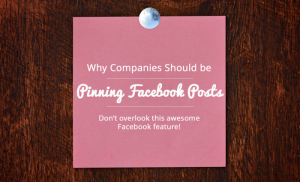
Hiring for Fit vs Hiring for Title... And Facebook
Retention is one of HR’s primary mandates. High turnover costs organizations tons of cash and man-hours, it disrupts team dynamics, and is just plain stressful.
To quote everyone’s favorite meme: Ain’t nobody got time for that!
When most of us discuss retention, we start the conversation post-hire. We look at incentives, engagement, and boosting employee morale. I recently wrote a blog post about creating a culture of retention that discussed exactly these points, but as important as all of those factors are, they don’t address the importance of recruiting.
Recruiting for cultural fit is almost always discussed as a means to maintain company culture and brand. This is why we end up with some articles arguing that hiring for fit leads to a lack of innovation caused by homogeneity. In truth though, hiring for fit has absolutely nothing to do with selecting candidates who are all exactly the same.
Hiring for fit is about finding candidates who:
Love what your company does
Have similar values to your organization
Will get along well with their future coworkers
Compliment the rest of your team with their skill set
Have a style of work that meshes with your other employees
Have similar priorities to your staff and organization
I would argue that these traits matter more than work history, education, and demographics combined.
I’ll use an example to better explain why I think this is true.
A friend of mine recently acquired a new coworker, let’s call him Pickles. Now, Pickles has fantastic credentials: he has a great education, has worked for some impressive companies, and, on paper, he blew all the other candidates out of the water. So, obviously, Pickles got the job.
Unfortunately, Pickles is also a know-it-all, who won’t follow directions, is extremely combative with both superiors and peers, and is about as disorganized as they come. He is both an energy and productivity vampire.
Pickles is about to be demoted, while his coworkers are really, really hoping he gets fired. Which makes them feel guilty, which leads to them feel resentful, which further hampers the team’s overall productivity.
Darn you Pickles!
Now, what if the team had hired Mustard? Sure, she went to community college, and she’s only been working for just over a year, but she is passionate about her industry, loves learning new things, and is so organized she doesn’t even need to use the reminder app on her iPhone, but she still does, just in case!
Mustard may have needed a little more specialized training, and taken a little more time to get familiar with industry specific technologies, etc… But, even the most experienced candidates need at least some re-training to work in accordance with company standard. Mustard is a fast learner too, so she would have caught up in no time, and once she had, she would have made a much better employee than Pickles.
In case you couldn’t tell, my friend was really gunning for Mustard!
If you’re with me in your love of Mustard, and candidates like her, then the question becomes: How do we track down the Mustards of this world? How do we find candidates who fit?!
With Facebook, Grasshopper. It always comes back to Facebook.
Using Facebook Ads, you can target candidates that fit with your company culture, and even more importantly, the team you currently have!
LinkedIn makes work history, education, and skills the focus of their profiles; Facebook includes all of these categories, but makes interests, and “Likes”, a priority with their profiles.
Thanks to graph search, you can either use this information to source candidates, or to target them with recruiting ads that take a more comprehensive approach to candidate profiling. An approach that includes a candidate’s interests, hobbies, and any other traits that may give you insight into their character.
Stay tuned next week for a revamp of our guide to Facebook ads, and some more specific ways that you can use Facebook to hire for fit.
Have a fantastic week, and happy social recruiting!
I’m off to make a sandwich. No Pickles.





